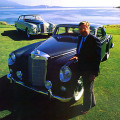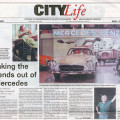Photography by David Gooley
The Star (Mercedes Benz Club Magazine), July/August 2009
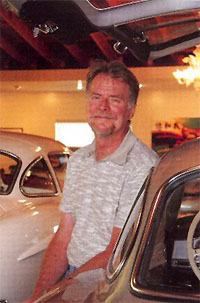
Scott Grundfor’s Views on Mercedes-Benz and Dream Cars
While studying public management at UCLA in the mid-’60s, Scott Grundfor opened up a small automotive detail and repair shop at home to pay his way through school and support a growing family. When it came time to graduate, his business was doing well enough that, instead of using his degree he chose instead to expand his car business.
At its height, Scott Restorations, located in Panorama City, California, employed 50 and specialized in fine Mercedes-Benz automobiles, particularly the revered 300SL, for which he has gained a reputation as one of the world’s premier restorers. He sold that business in 1990 and resettled in Kalamazoo, Michigan, where he founded Scott Grundfor Co.
In 2001, he moved to Arroyo Grande on California’s central coast, where he grows grapes, keeps horses, and with the help of three employees, continues to restore cars for himself and a few customers. His car collection is housed in a museum showroom adjoining his shop. Grundfor, who had been restoration editor for The Star magazine for more than 20 years, is a frequent judge at Pebble Beach whose own projects have won 35 best-of-show awards and more than 70 major-awards.
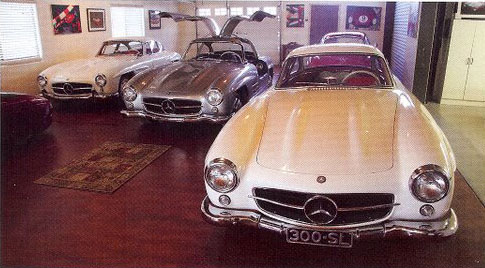
Your restoration business and your own collection have always focused heavily on Mercedes-Benz. What is the attraction to that marque?
I was always fascinated by Mercedes because of their reputation for engineering. When I bought my first Mercedes in 1968 – a 1954 300b sedan – I was just really impressed with the complete quality of the automobile. Working my way through school and during my first 10 years in business, I worked on just about everything, but Mercedes, in my opinion, made the highest quality automobile. There was really nothing like it. The styling you can like or not like: some of the styles are not the greatest. In the ’60s, especially, they came out with some designs that certainly weren’t wonderful. But the machinery, almost without exception, was just the best.
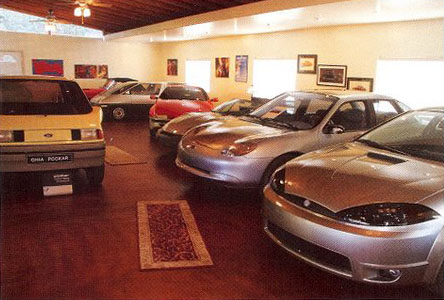
Some of the finest and rarest Mercedes in the world have passed through your hands. What models do you currently own?
A 1956 300SLS roadster prototype, which was the last pre-production 300SL roadster prototype; a 1961 190SL convertible, the very first Scott Restoration; a 1967 250SE coupe; a 1969 280SE cabriolet; a 1971 280SE 3.5 cabriolet; and a 1972 280SE 4.5 sedan.
Which is your most recent acquisition?
I purchased the ’56 300SLS late last year from a collector outside of London. It was the very last of five pre-production 300SL roadster prototypes. I had owned prototype one and written a lot about it, and he found my name and called me up out of the blue to ask my advice, and I ended up buying it.
Which Mercedes models are you most attracted to?
The usual post-World War II cars, I was not as interested in the prewar cars, although we did a couple of 540Ks for Pebble Beach. Collectors tend to have an almost visceral connection to the cars they saw when they were in their formative years, their pre-teens and teens. Sports cars, and mostly sports cars of the ’50s, were the ones that I really dreamed about.
What is your favorite Mercedes model?
My favorite is probably the Gullwing. In my business, I began to specialize in the 300SL and developed an interest and connections in that world. For car nuts, if they see a Gullwing, it’s a big deal, and for a shop to restore one, it’s really a big deal. Some people consider it the sports car of the ’50s and they are wonderful cars. But at one time I had 30-some 300SLs in my shop. You can just do so many, and then it just becomes work. In order to maintain interest, I began to actively seek out, research, and try to find the very few special interest Mercedes that were built. Typically, the Germans, especially post-war, and especially Mercedes, did not build unusual cars. They would build one, two, or maybe a few more prototypes, and they’d go into production, and that was it. So the only unusual ones that were really available were the pre-production cars.
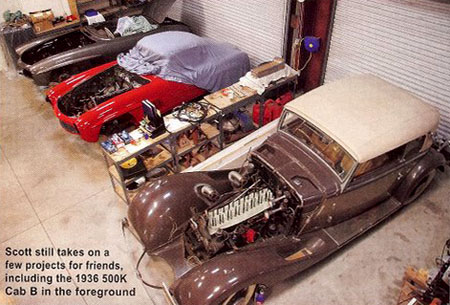
When did you get interested in cars?
I’ve always had an interest in mechanics. When I was 11 years old, my grandfather, who taught me a lot of the skills I have, made me a workbench, gave me a set of tools, and proceeded to teach me how to use them. We built a wooden go-cart together. He was an engineer whose last project was working on the X-15, which now hangs in the main foyer of the National Air and Space Museum at the Smithsonian, along with the Wright Brothers Flyer and the Spirit of St. Louis. He was a superb craftsman, very, very bright, and I had the good fortune of having him for a grandfather.
My dad was also really into cars and always getting a different model. My sister and I would sit in the back seat and play a game of name that car, and from the time we were five or six years old, we could identify virtually anything on the road.
It seems you’re drawn to cars that are unusual or ground-breakers in some way?
That, again, goes back to my grandfather. From the time that I was about 10 years old he would take me to the major auto shows, like Motorama and the L.A. Auto Show, and the things that awed me were the dream cars, which were unique and a vision of the future. They were what you would expect to see maybe 10 or 20 years ahead, and there was nothing like them. They were also presented in a very theatrical way. There would be turntables and lights, an orchestra, sometimes a singer, and young ladies dressed in what was the height of fashion at the time. The presentation and the cars were just really something to see, so in my mind, the crown jewel of the automobile was the dream car, which later became known as a concept car. I just had this fascination with them.
Did you try to acquire any?
Up until the last few years, dream cars or concept vehicles havebeen almost impossible to buy. It was not a question of money so much as the fact that they were so rare and unique, coupled with the fact that the manufacturers typically either kept them or destroyed them. Concept cars never came up for sale, with very few exceptions. So my way of dealing with that was to become immersed in the unusual post-War Mercedes.
But it turns out you’ve ended up with a pretty impressive collection of those cars after all. How did that come about?
In 2002, Ford decided to sell their older concept cars, which were just sitting in a warehouse in Detroit collecting dust, and there was a certain expense in keeping them. The Ford Museum had been offered the cars, but declined. It was also Ford’s centennial, and to kick that off they commissioned Christie’s to auction 52 of the one-offs. I ignored it initially, thinking nobody would sell off their real dream cars, the best of the best, the cutting edge. Winston Goodfellow, with whom I judged for a number of years at Pebble Beach, convinced me to go.
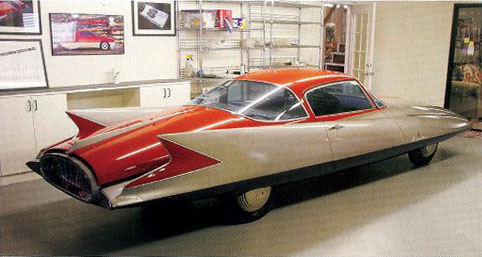
What did you buy?
I was expecting to be able to buy one or two, but the event was poorly attended, and the cars that sold for huge money were the big, more contemporary glamour queens. They were beautiful cars, but in terms of automotive design they went nowhere. I ended up with six cars from the auction and have collected five others since then. Ten of the cars are Ford-related, and six or seven were built in Turin, Italy, by Carrozzeria Ghia, which had become Ford’s European design center. There’s one that is a bonafide dream car from the era, the 1955 Ghia Streamline X, nicknamed the Gilda, and probably Ghia’s most significant design. It was commissioned by Virgil Exner, head of design at Chrysler in the early ’50s, who wanted a show car that exhibited a legitimate use for tailfins. The Gilda represents the genesis of the tailfins used in Chryslers products, which they called the “forward look.” It was a hugely popular design that all of the other manufacturers copied.
Which is your favorite of the prototypes?
The Gilda. It’s an amazing looking car. It was an absolute sensation at the Turin Show when it was released. As far as I can tell, it only did that one season of shows in Europe and then was given to the Ford Museum and essentially stuck in the back room. Strother McMinn was asked to do a story for Road & Track in 1984 about what he considered to be the 10 most significant automobile designs of all time. The Gilda was one of the 10. It’s an icon that will survive.
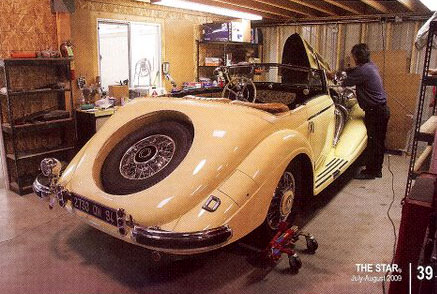
Which cars do you drive most?
I have a half-dozen that I try to get out and drive. One of my favorites is the 1972 280SE 4.5 sedan; it’s a great old Mercedes with kind of a ’60s look, and a great car to drive. I’ve got a 1952 Cadillac Fleetwood and a 1965 Citroen ID 19 sedan that I like to drive.
What is your favorite part about collecting and restoring cars?
I like the stories behind the cars. An automobile is, I won’t say “just a chunk of metal,” but it is a bunch of parts and paint and chrome and steel and aluminum. The thing that makes it interesting is its story. Maybe it has some importance or significance because of its design or construction, or maybe it’s because of the people and history associated with the car. I’ve spent a ton of time collecting articles. Tracing the history can be frustrating, but it’s also fun, and that’s what I find most fascinating.


